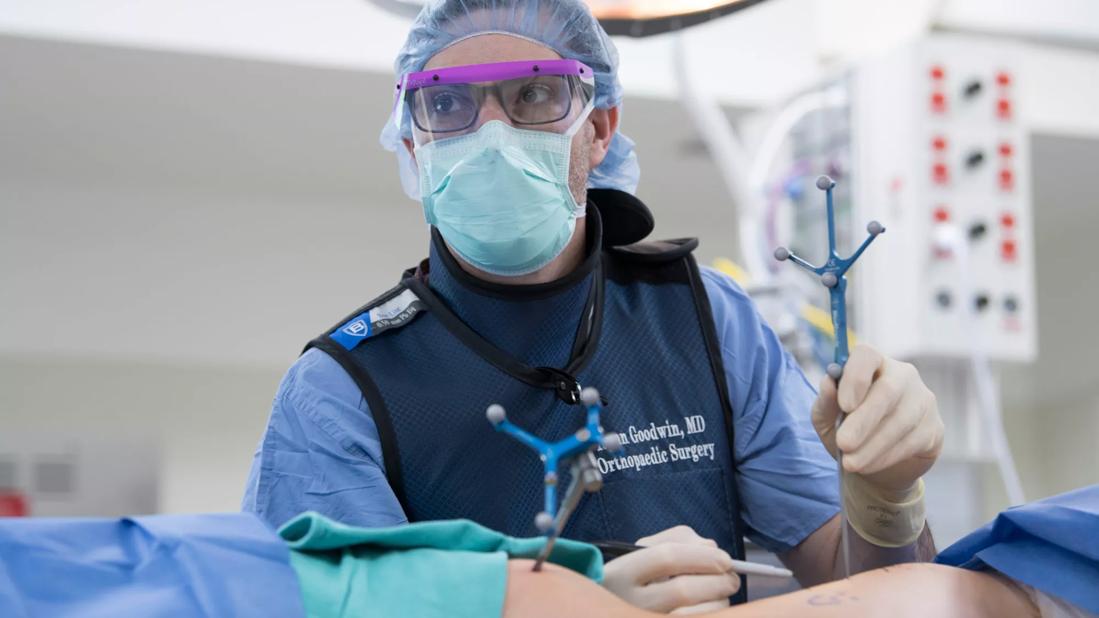Effective pain relief and major postoperative complications correlate with length of stay, study finds

The use of epidural analgesia (EA) may be a protective factor against extended length of stay (LLOS) in patients undergoing posterior segmental instrumented fusion (PSIF) for adolescent idiopathic scoliosis (AIS).
Advertisement
Cleveland Clinic is a non-profit academic medical center. Advertising on our site helps support our mission. We do not endorse non-Cleveland Clinic products or services. Policy
A retrospective cohort study, recently published in the journal Spine Deformity, analyzed a variety of demographic and surgical factors in order to identify independent risk factors associated with increased LOS. The two factors most strongly associated with LLOS were major postoperative complications and the use of EAs for pain management. Other factors with statistically significant correlations were female sex, ≥9 ±2 levels of fusion, amount of operative blood loss, major postoperative complications, lack of EA and higher thoracic kyphosis.
“Length of stay is important in an era of value-based care; however, studies such as this one are concerned with more than reimbursement,” states Ryan Goodwin, MD, Director of Cleveland Clinic’s Center for Pediatric and Adolescent Orthopaedics. “The modifiable risk factors we identified, such as effective pain relief and major postoperative complications, relate to patient safety and well-being and overall quality of care.”
The study involved retrospective analysis of data from pediatric scoliosis patients (n = 407) undergoing surgical correction from January 1, 2009 through December 31, 2017. Researchers defined a short length of stay (SLOS) as fewer than four days, and a LLOS as four or more days.
Of the patients included in this single-institution study, 232 had SLOS, with a mean stay of 3 ±0.5 days. The remaining 175 patients had LLOS, with a mean stay of 6 ±2 days. Researchers looked at factors related to a patient’s demographics, comorbidities and preoperative measurements of scoliosis curve, as well as factors related to the surgery itself and any complications.
Advertisement
Among the demographic characteristics, only female sex had statistically significant associations with LLOS. Higher thoracic kyphosis was the only preoperative radiographic measurement to correlate with LLOS. Comorbidities had no statistically significant impact on LOS.
In terms of surgery-related characteristics and postoperative complications, which might be considered somewhat modifiable risk factors, operative time and the number of osteotomies had no significant impact on LOS. Patients in whom 7 ±2 levels were fused had SLOS compared to patients who had 9 ±2 levels fused.
In patients with major postoperative complications, such as the development of motor weakness, the need for transfusion, infection or reoperation, the risk of LLOS increased 11-fold. Patients without EA for pain control, a modifiable factor, had a three-fold increased risk of LLOS. Comorbidities, preoperative curve Cobb angle and number of osteotomies did not have a statistically significant impact on LOS.
Dr. Goodwin notes, “To our knowledge, this is the largest single-institution study, looking at the most comprehensive list of potential risk factors that might impact length of stay in this patient population. One day in a U.S. hospital can cost up to $4,000. Lowering these costs by reducing the number of in-hospital recovery days is good for everyone involved—patients, providers and payers.”
Advertisement
Advertisement

Tool helps patients understand when to ask for help

Large NIH-funded investigation is exploring this understudied phenomenon

Advances in genomics, spinal fluid analysis, wearable-based patient monitoring and more

Case study of radial-to-axillary nerve transfer for tumor-related deltoid nerve injury

An update on the technology from the busiest Gamma Knife center in the Americas

Real-time adjustments may help reduce bothersome dyskinesias

Anatomical modeling can identify optimal surgical candidates, study suggests

Add AI to the list of tools expected to advance care for pain patients